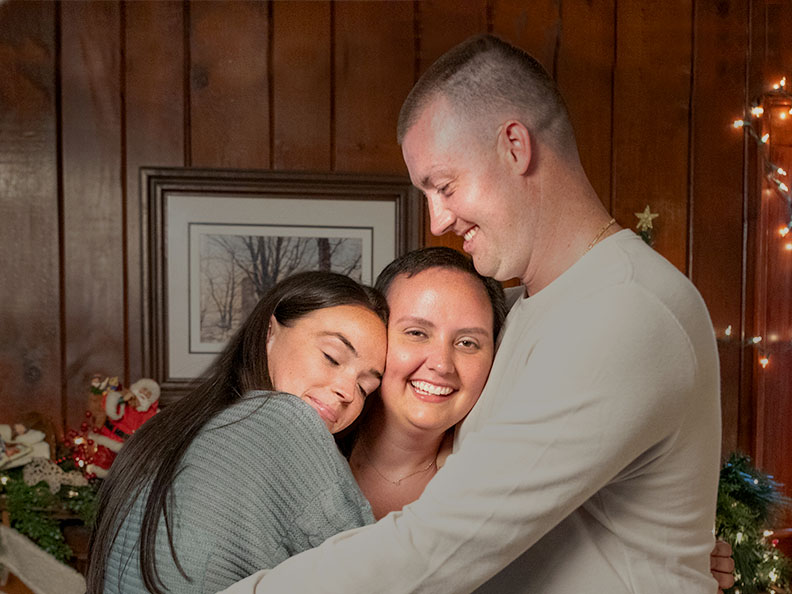Your gift is 100% tax deductible
Surgery for Soft Tissue Sarcomas
Surgery is commonly used to treat soft tissue sarcomas. Depending on the site and size of a sarcoma, surgery might be able to remove the cancer. The goal of surgery is to remove the entire tumor along with at least 1 to 2 cm (less than an inch) of the normal tissue around it. This is to make sure that no cancer cells are left behind. When the removed tissue is looked at under a microscope, the doctor will check to see if cancer is growing in the edges (margins) of the specimen.
- If cancer cells are found at the edges of the removed tissue, it is said to have positive margins. This means that cancer cells may have been left behind. When cancer cells are left after surgery, more treatment − such as radiation or another surgery -- might be needed.
- If cancer isn’t growing into the edges of the tissue removed, it's said to have negative or clear margins. The sarcoma has much less chance of coming back after surgery if it's removed with clear margins. In this case, surgery may be the only treatment needed.
When the tumor is in the abdomen, it can be hard to remove it and enough normal tissue to get clear margins because the tumor could be next to vital organs that can’t be taken out.
Amputation and limb-sparing surgery
In the past, many sarcomas in the arms and legs were treated by removing the limb (amputation). Today, this is rarely needed. Instead, the standard is surgery to remove the tumor without amputation. This is called limb-sparing surgery. A tissue graft or an implant may be used to replace the removed tissue. This might be followed by radiation therapy.
Sometimes, an amputation can’t be avoided. It might be the only way to remove all of the cancer. Other times, key nerves, muscles, bone, and blood vessels would have to be removed along with the cancer. If removing this tissue would mean leaving a limb that doesn't work well or would result in chronic pain, amputation may be the best option.
Surgery if sarcoma has spread
If the sarcoma has spread to distant sites (like the lungs or other organs), all of the cancer will be removed if possible. That includes the original tumor plus the areas of spread. If it isn't possible to remove all of the sarcoma, then surgery may not be done at all.
Most of the time, surgery alone cannot cure a sarcoma once it has spread. But if it has only spread to a few spots in the lung, the metastatic tumors can sometimes be removed. This can cure patients, or at least lead to long-term survival.
Lymph node dissection
If lymph nodes near the tumor are enlarged, cancer may be in them. During surgery, some of the swollen nodes may be sent to the lab and checked for cancer. If cancer is found, the lymph nodes in the area will be removed. Radiation might be used in that area after surgery.
Treatments used with surgery
Sometimes chemotherapy (chemo), radiation, or both may be given before surgery. This is called neoadjuvant treatment. It can be used to shrink the tumor so that it can be removed completely. Chemo or radiation can also be given before surgery to treat high-grade sarcomas when there's a high risk of the cancer spreading.
Chemo and/or radiation may also be used after surgery. This is called adjuvant treatment. The goal is to kill any cancer cells that may be left in the body to lower the risk of the cancer coming back.
More information about surgery
For more general information about surgery as a treatment for cancer, see Cancer Surgery.
To learn about some of the side effects listed here and how to manage them, see Managing Cancer-related Side Effects.
- Written by
- References

The American Cancer Society medical and editorial content team
Our team is made up of doctors and oncology certified nurses with deep knowledge of cancer care as well as editors and translators with extensive experience in medical writing.
Ecker BL, Peters MG, McMillan MT, et al. Implications of Lymph Node Evaluation in the Management of Resectable Soft Tissue Sarcoma. Ann Surg Oncol. 2017;24(2):425-433.
Fiore M, Ford S, Callegaro D, et al. Adequate Local Control in High-Risk Soft Tissue Sarcoma of the Extremity Treated with Surgery Alone at a Reference Centre: Should Radiotherapy Still be a Standard? Ann Surg Oncol. 2018 Feb 22.
Helman LJ, Maki RG. Sarcomas of soft tissue. In: Niederhuber JE, Armitage JO, Doroshow JH, Kastan MB, Tepper JE. Abeloff‘s Clinical Oncology. 5th ed. Philadelphia, PA. Elsevier: 2014: 1753-1791.
Keung EZ, Chiang YJ, Voss RK, et al. Defining the incidence and clinical significance of lymph node metastasis in soft tissue sarcoma. Eur J Surg Oncol. 2018;44(1):170-177.
MacNeill AJ, Gupta A, Swallow CJ. Randomized Controlled Trials in Soft Tissue Sarcoma: We Are Getting There! Surg Oncol Clin Am. 2017;26:531-544.
National Cancer Institute. Adult Soft Tissue Sarcoma Treatment (PDQ®)–Patient Version. May 15, 2017. Accessed at www.cancer.gov/types/soft-tissue-sarcoma/patient/adult-soft-tissue-treatment-pdq on March 30, 2018.
National Comprehensive Cancer Network, Clinical Practice Guidelines in Oncology (NCCN Guidelines®), Soft Tissue Sarcoma, Version 1.2018 -- October 31, 2017. Accessed at www.nccn.org/professionals/physician_gls/pdf/sarcoma.pdf on March 30, 2018.
Singer S, Maki R, O’Sullivan B. Soft tissue sarcoma In: DeVita VT, Heilman S, Rosenberg SA, eds. Cancer: Principles and Practice of Oncology. 9th ed. Philadelphia, Pa: Lippincott Williams & Wilkins; 2011:1533-1577.
Last Revised: April 6, 2018
American Cancer Society medical information is copyrighted material. For reprint requests, please see our Content Usage Policy.
American Cancer Society Emails
Sign up to stay up-to-date with news, valuable information, and ways to get involved with the American Cancer Society.



